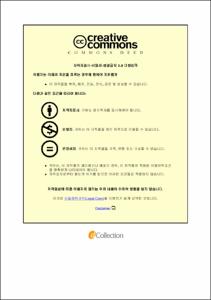Impact of Impurities from Spent Lithium-ion Batteries Recycling Process on NCM Precursor Morphology and Electrochemical Performance
- Abstract
- The use of lithium-ion batteries (LIBs) is expanding to various fields as a solution for climate issues caused by fossil fuel. For this reason, a substantial amount of used LIBs gives another issues on how to treat in the near future, posing environmental challenges. The spent-LIBs contain valuable metals that can be utilized as resources, though they can cause problems such as soil contamination and fire hazards when incinerated or landfilled. Therefore, much attention should be given to technologies for recovering cathode active materials from the spent-LIBs.
Unfortunately, the spent-LIBs contain other elements such as Fe, Cu, Al, and C, which are called third elements, as well as Ni, Co, and Mn cathode active materials. These are components composing the collector, casing, and electrolyte. The third elements can alter the shape or structure of the cathode active material during the resynthesis process. As a result, recent research focuses on the effect of these impurities on synthesizing cathode active materials.
In this study, we analyze the metal solution produced from the spent LIBs recycling process in industry and synthesize NCM cathode precursors and active materials using this solution. We then examine potential issues which may be generated from the recycling process of waste batteries and finally investigate thoroughly the impact of the impurities on the resynthesis of the cathode active material.
The ICP-OES analysis reveals that the recycled metal solution contains a significant amount of Na and Li, which are generated during the recycling process, along with anticipated elements such as Al and Cu. FE-SEM analysis of the cathode precursor synthesized using a coprecipitation reaction confirms that the recycled metal solution containing Na produces precursor with relatively large diameter and low internal density structure. Additionally, XRD analysis reveals strong cation mixing in the NCM cathode active material synthesized from the recycled metal solution.
To evaluate the electrochemical performance of the recycled cathode active material, we conduct constant current charge and discharge for 150 cycles, impedance analysis, CV analysis, and so on. While no significant difference is observed in the initial capacity between the standard NCM and the recycled NCM, the performance of the recycled NCM is drastically deteriorated at high-output environments after 50 cycles. This phenomenon might be attributed to the increase in lithium diffusion distance because the by impurities in the recycled metal solution lead to larger diameter in the NCM size, increase structural instability at high voltages due to strong cation mixing, and finally leads to large polarization by lithium side products existing on the surface.
Through these physical and electrochemical analyses, we confirm that precise impurity control must be needed at raw material stage when resynthesizing cathode active materials from spent LIBs recycling.
- Issued Date
- 2023
- Awarded Date
- 2023-08
- Type
- Dissertation
- Keyword
- Lithium-ion Batteries; Recycling; Impurities
- Alternative Author(s)
- JaeKwon KIM
- Affiliation
- 울산대학교
- Department
- 일반대학원 화학공학전공
- Advisor
- 오은석
- Degree
- Master
- Publisher
- 울산대학교 일반대학원 화학공학전공
- Language
- eng
- Rights
- 울산대학교 논문은 저작권에 의해 보호 받습니다.
- Appears in Collections:
- Chemical Engineering > 1. Theses (Master)
- 파일 목록
-
-
Download
 200000687207.pdf
기타 데이터 / 4.61 MB / Adobe PDF
200000687207.pdf
기타 데이터 / 4.61 MB / Adobe PDF
-
Items in Repository are protected by copyright, with all rights reserved, unless otherwise indicated.